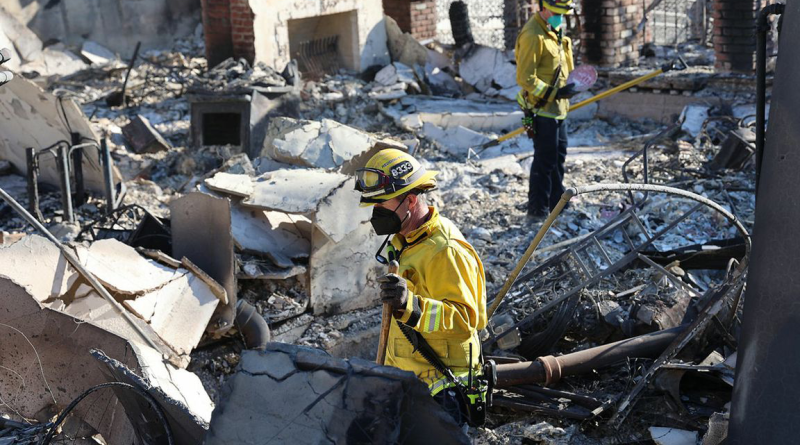Project Recovery Offers LA a Future-Ready Rebuild Plan
Subscribe to our free newsletter today to keep up-to-date with the latest construction news.
The increasing severity of wildfires across California is driving a reassessment of how communities recover from wildfires that have become persistent threats. In response, recovery efforts now require more than repairs. They demand a forward-thinking approach to urban planning and climate adaptation.
The recent “Project Recovery” collaboration between the UCLA Ziman Center for Real Estate, the USC Lusk Center, and the Urban Land Institute Los Angeles offers a structured framework for rebuilding. The initiative focuses on areas like Pacific Palisades and Altadena that were heavily impacted by recent wildfires.
Lessons from Paradise
Paradise, California, experienced one of the most destructive wildfires in US history when the Camp Fire struck in 2018. Nearly 19,000 structures were lost, and more than 50,000 residents were displaced. The town’s recovery has since become a blueprint for what resilient rebuilding can look like under extreme conditions.
The Paradise Long-Term Recovery Plan focused on four priorities: infrastructure, housing, economic revitalization, and community involvement. The town introduced underground utilities, enhanced fire codes, and streamlined housing approvals to avoid delays and reduce risk.
While progress has been uneven due to labor shortages and insurance delays, Paradise has shown that rebuilding is as much about policy and governance as it is about construction. The experience offers valuable lessons for other regions, including the importance of aligning state and federal support with local needs.
Building coordinated frameworks for urban resilience
Effective recovery requires more than funding. It depends on coordinated governance, clear policies, and access to long-term financing. The Urban Recovery Framework, developed by UN-Habitat, outlines these pillars and highlights their relevance in disaster-prone regions.
For Los Angeles, fragmented recovery efforts can slow progress. Project Recovery addresses this by recommending the creation of dedicated rebuilding authorities. These would act as centralized coordinators across neighborhoods, ensuring resources are distributed efficiently and recovery milestones are met.
Equally important is community engagement. When residents help define rebuilding priorities, the process becomes more equitable and outcomes more relevant. Transparent communication and participatory planning are essential to success.
Clearing supply chain and permitting bottlenecks
Post-disaster recovery often stalls due to supply chain and permitting challenges. The sudden demand for building materials and skilled labor overwhelms local markets. In Paradise, construction delays were common because materials were scarce and crews were stretched thin.
Los Angeles faces similar risks. Recovery plans must include strategies to address these logistical hurdles. Project Recovery recommends measures such as material pre-positioning, regional labor-sharing agreements, and pre-approved building templates that can speed up permitting.
Reducing red tape without compromising safety is a delicate balance. However, a more agile permitting process is essential in the aftermath of widespread destruction. Without it, rebuilding can take years, and displaced residents may never return.
Integrating climate adaptation into recovery strategies
Recovery presents an opportunity to design communities that are better equipped to handle future climate events. Climate adaptation should not be an afterthought. It must be embedded in zoning codes, infrastructure design, and community planning from the start.
Nature-based solutions, such as green buffers and fire-resistant landscaping, are effective in managing wildfire risk. Sustainable materials and smart urban layouts reduce vulnerability without adding significant costs. These techniques should be part of any rebuilding plan.
Social resilience is just as important. A recovery strategy that ignores affordable housing, public health access, and transportation equity will leave communities exposed to the same risks in the next disaster. A resilient city is not just one that withstands fire but one that supports its residents during and after a crisis.
The aftermath of a wildfire challenges every part of a community. Success depends on more than financial assistance. It requires strong leadership, community engagement, and policies that prioritize long-term sustainability over short-term fixes.
The Project Recovery framework provides more than a checklist. It offers a model for building back in a way that anticipates future risks. If Los Angeles can lead with this approach, it could set a precedent for other cities navigating similar challenges.
Sources
